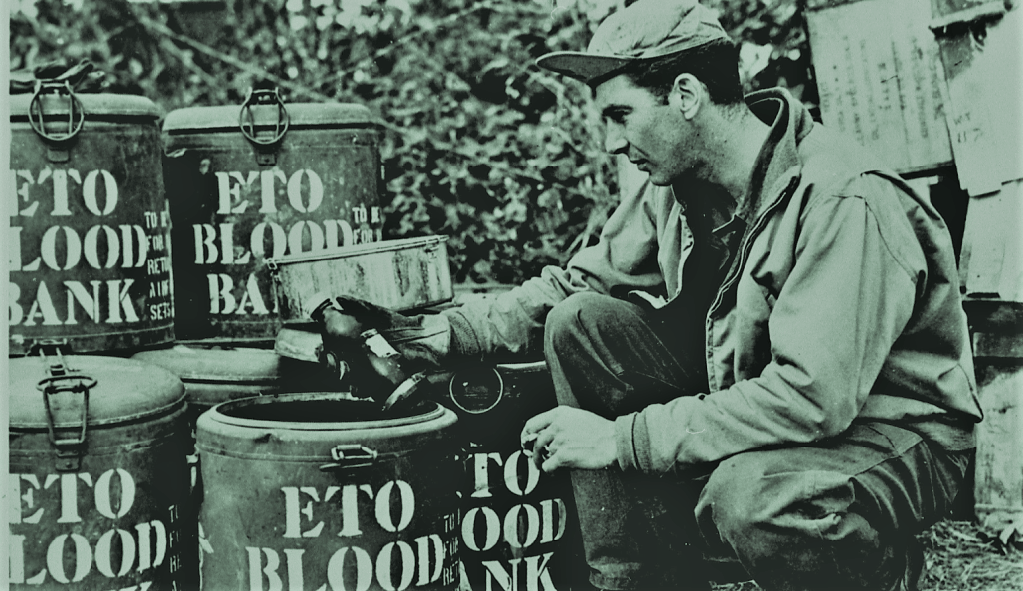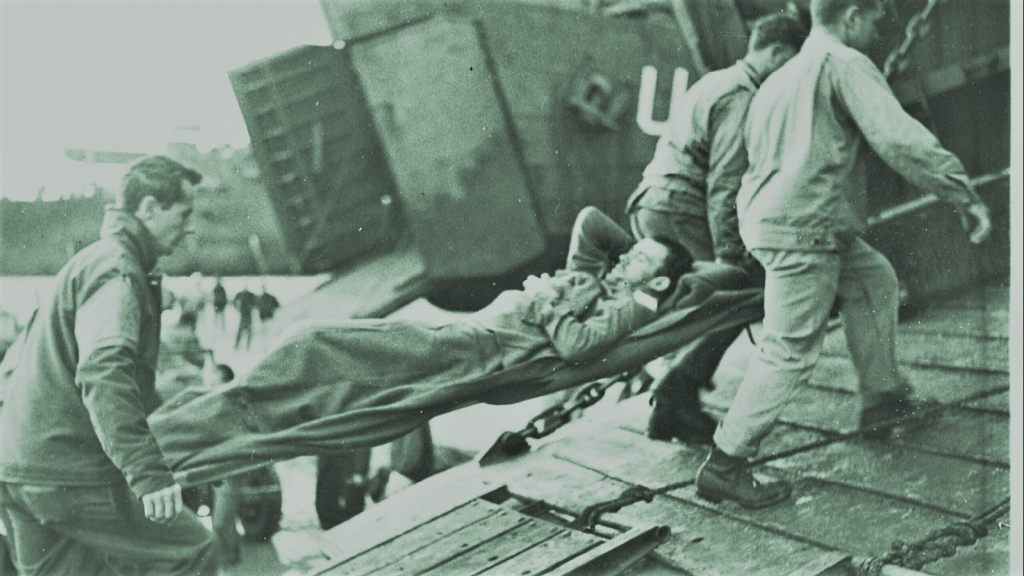
During World War II, many medical advances were made. Surgery techniques such as removing dead tissue resulted in fewer amputations than at any time. The treatment of bacterial infections with penicillin or streptomycin was administered for the first time in large-scale combat. In the beginning, plasma was available as a substitute for blood. By 1945, serum albumin had been developed, which is whole blood, rich in the red blood cells that carry oxygen and is considerably more effective than plasma alone.
The photographs above and below: Wounded American soldiers receiving blood plasma alongside a road in Normandy while awaiting transport to hospitals behind the lines. Major General H.W. Kenner, Chief Medical Officer at Allied Supreme Headquarters, disclosed on 5 August 1944 that 97 out of every 100 Allied soldiers wounded in France survived because of the speedy handling of injuries.

Allied casualties in Normandy were 30 per cent less than expected. Blood transfusions are credited with saving thousands of lives, with blood plasma being carried in each soldier’s kit and whole blood being administered at field hospitals. U.S. service men and women stationed in Great Britain set up a blood donors’ centre at a U.S. Army hospital to donate blood to the wounded in France. With a speedy process of handling—blood flowed into the veins of an injured soldier in France within a few hours after it was taken from the arm of a buddy in England.

Sources




















































You must be logged in to post a comment.